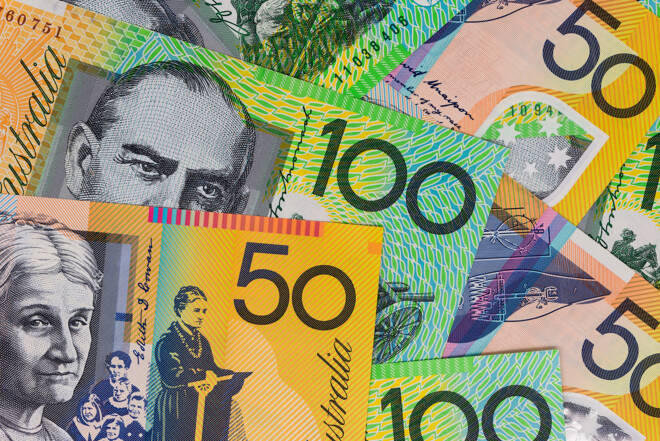Advertisement
Advertisement
AUD to USD Forecast: Aussie in Tight Spot with Service Sector PMIs in Focus
By:
Amidst AUD/USD's decline, investors eye Judo Bank PMIs, with the Australian Dollar’s stability hinging on service sector activity.
Highlights
- AUD/USD faced a 0.49% decline on Thursday, indicating turbulence in currency markets.
- Near-term AUD/USD trends hinge on US PMIs.
- US services’ contribution to over 75% of GDP underscores the weight of upcoming PMI numbers.
Thursday Overview
On Thursday, the AUD/USD declined by 0.49%. Following a 0.10% loss on Wednesday, the Aussie dollar ended the day at $0.64156. The Aussie dollar rose to a high of $0.64526 before falling to a low of $0.63852.
Private Sector Activity Set the Slow Further
Preliminary Australian manufacturing and services sector PMIs will be in focus this morning. Economists forecast the Judo Bank Services PMI to show a contraction, falling from 47.8 to 46.5. The services sector contributes over 60% to GDP, leaving the AUD/USD exposed to a more marked contraction across the services sector.
Economists predict the Judo Bank Manufacturing PMI to decline from 49.6 to 49.5. However, investors will likely brush aside the manufacturing PMI numbers. The Australian manufacturing sector contributes less than 10% to GDP.
US Private Sector in the Spotlight
On Friday, preliminary private sector PMIs for September will garner investor interest. Following the hotter-than-expected jobless claims and hawkish FOMC economic projections, a pickup in service sector activity would fuel bets on a November Fed rate hike.
US services sector PMI numbers will impact Fed rate hike expectations more. The services sector contributes over 75% to GDP. Higher-than-expected numbers would paint a rosier picture of the US economy.
However, investors should consider the sub-components, including employment, new orders, and inflation trends.
Beyond the economic indicators, investors should monitor FOMC member commentary. Deviation from the hawkish script could test buyer appetite for the US dollar.
Short-Term Forecast
Economic indicators and central bank policy stances leave macroeconomic and monetary policy divergence tilted toward the US dollar. However, increased sensitivity to US economic indicators exposes the US dollar to downside risks on weaker-than-expected leading economic indicators. The US services PMI will dictate the near-term AUD/USD trends.
AUD/USD Price Action
Daily Chart
The AUD/USD sat below the 50-day and 200-day EMAs, reaffirming bearish price signals.
An AUD/USD return to $0.6450 would support a move toward the $0.64900 resistance level and 50-day EMA. However, the Australian services PMI must impress to signal a breakout from $0.6450. Selling pressure will likely intensify at $0.65, with the 50-day EMA confluent with the $0.64900 support level.
A weak Australian services PMI and a pickup in US service sector activity would support a break below the $0.63854 support level. A break below the $0.63854 support level would bring the trend line into view.
An RSI reading of 43.88 supports an AUD/USD break below the $0.63854 support level before entering oversold territory (typically below 30 on the RSI scale).
4-Hourly Chart
The AUD/USD remains below the 50-day and 200-day EMAs, reaffirming bearish price signals.
A break above the 50-day EMA would support an AUD/USD move to the 200-day EMA and $0.64900 resistance level. However, failure to break above the 50-day EMA would leave the $0.63854 support level in play. A break below the $0.63854 support level would give the bears a look at $0.63500 and the trend line.
The 14-period 4-Hourly RSI at 44.64 signals an Aussie dollar break below the $0.63854 support level before entering oversold territory.
About the Author
Bob Masonauthor
With over 28 years of experience in the financial industry, Bob has worked with various global rating agencies and multinational banks. Currently he is covering currencies, commodities, alternative asset classes and global equities, focusing mostly on European and Asian markets.
Advertisement
